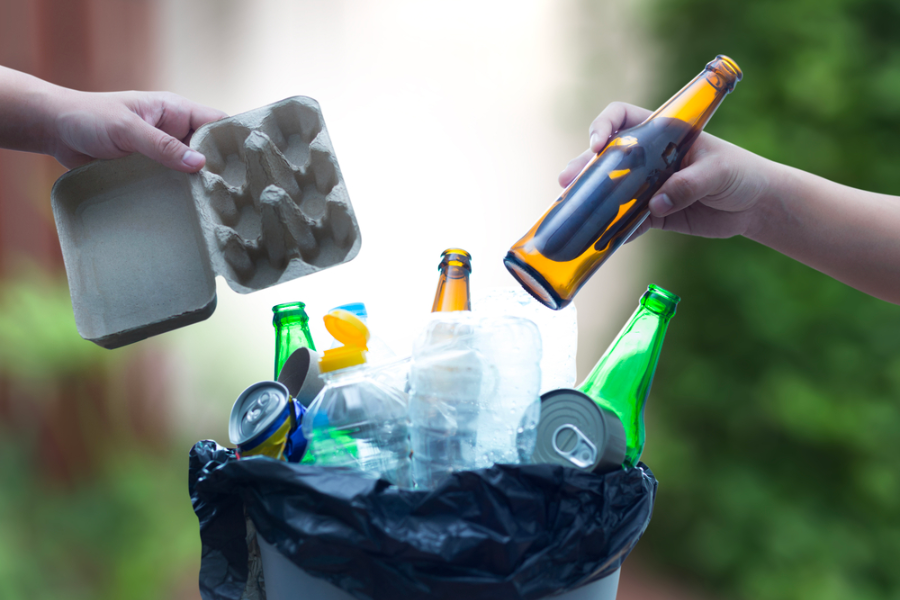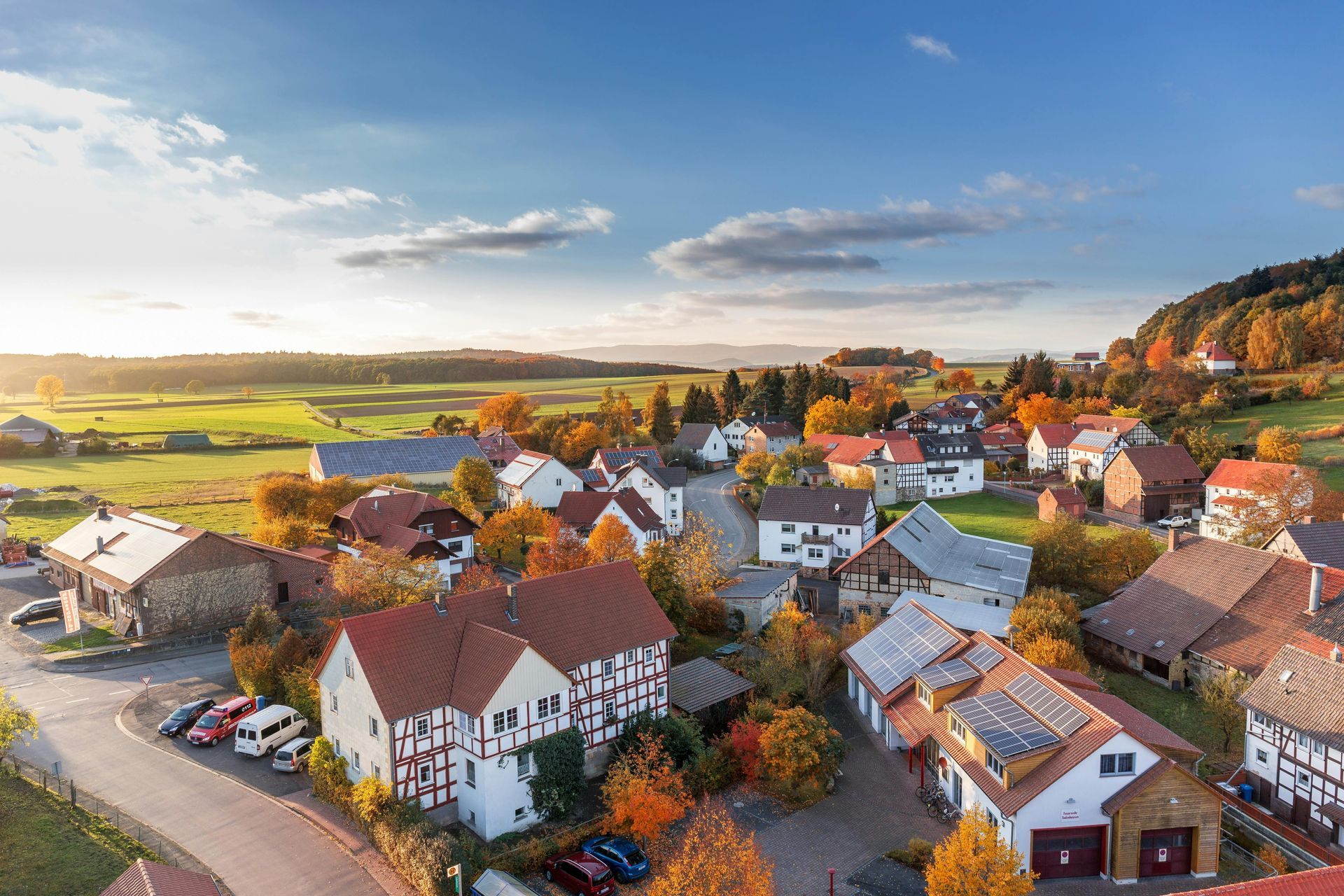The Lives of Recyclables
February 26, 2019
This guest blog is courtesy of RoadRunner Recycling. The post was written by Shelby Bell at RoadRunner Recycling.
Have you ever wondered what happens to your materials after they have been tossed in the recycling bin? After collection, each material is set on its own path to become a new product. Some materials can cycle through the process indefinitely, while others can only be recycled a few times before they lose their quality. Continue reading to learn about the recyclables’ journey from the recycling bin back to the shelf.

Cardboard
Did you know, 1 ton of recycled cardboard saves 46 gallons of oil and over 9 cubic yards of landfill space? Cardboard fibers are strong and can break down many times before they lose their quality. Once cardboard travels from your recycling bin to a recycling facility, the process begins. First, a machine shreds the cardboard down to tiny pieces. During the second step, the pieces mix with water and chemicals to create a pulp which further helps break down the fibers. Then, the pulp blends with raw materials like wood chips to help it solidify. The pulp filters through a machine to remove contamination such as glue, tape, or dyes. Finally, the drying process is the last step before the production of new items. Cardboard is usually recycled to create new cardboard, paperboard, or paper bags.

Aluminum
Remember to recycle your aluminum cans; they are one of the most recyclable materials! Aluminum never loses its quality and only requires 5% of the energy used to make the original material. To begin the recycling process, machines clean, sort, and melt the cans. The melting process removes any traces of paint, coatings, and ink that is on the aluminum. After, the melted aluminum pours into massive molds called ingots. A machine rolls out the ingots to make sheets, which is the last step before the creation of new product. Recycled aluminum can become bicycles, airplane parts, new cans, and more. Aluminum soda cans can go through this whole process and be back on a store shelf in only 60 days!
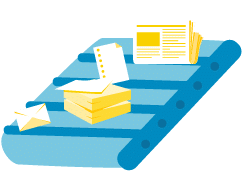
Paper
From computer paper to newspapers, a variety of paper products are recyclable. The recycling process begins by sorting the paper by grade and type, such as: newspaper, computer paper, and magazines. Next, a machine shreds the paper into small pieces and washes it to remove adhesives and contaminates. No need to worry about the stray sticky note or staple! Next, the paper combines with water and chemicals to separate the fibers and create a pulp. The pulp passes through a machine to remove excess water and is then heated to create rolls of dry, thin paper. The rolls are now ready to create new products like telephone books, newspapers, toilet paper and napkins. Not only does this save trees, the process of recycling old paper into new paper saves energy too! The EPA estimates recycled paper products requires only 60% of the energy used to create products from raw materials.
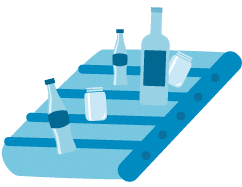
Glass
The EPA states, “Producing glass from virgin materials requires 30 percent more energy than producing it from crushed, used glass.” Unlike some materials, glass never loses its quality throughout the recycling process. To begin, machines sort the glass by color so it helps the product retain its strength. Once sorted by color, the next step involves crushing the glass into small pieces referred to as cullet. The cullet moves through a screening process to remove any contamination and impurities. The last step merges the cullet with heated silica sand, limestone, and soda ash to form the finished product. Recycled glass can create new glass containers, or even counter tops, flooring, sewer pipes, and more! Glass recycling has a very quick turnaround – they can go from the recycling bin to a store shelf in as little as 30 days!
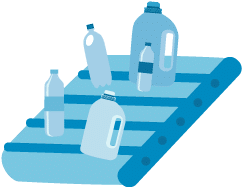
Plastic
If you have ever wondered what the number inside the recycling symbol on your plastic containers mean, it is to help identify the type of plastic. The recycling process begins by sorting the plastics by their recycling symbol (or resin number). Sorting is important because different plastics create different products. After sorting, a machine shreds and washes the plastic to remove impurities like labels or food residue. The next stop is the furnace, where the plastic melts down and is finally ready to create new plastic goods. Recycled plastics can create beverage containers, detergent bottles, playground equipment, and even clothing! This process only requires two-thirds of the energy needed to manufacture plastic from raw materials.
Understanding the recycling process helps clarify why it is important to recycle smarter. Recycling correctly will retain the quality of the materials, increase their life-cycles, and save a significant amount of energy. All of this starts by sorting your recyclables and taking the necessary steps to keeping them valuable. If you have any questions about the recycling process, contact us!
Sources: www.utahrecycles.org, The EPA
This original blog can be viewed online.
Disclaimer: Guest blogs represent the opinion of the writers and may not reflect the policy or position of the Northeast Recycling Council, Inc.
Share Post
